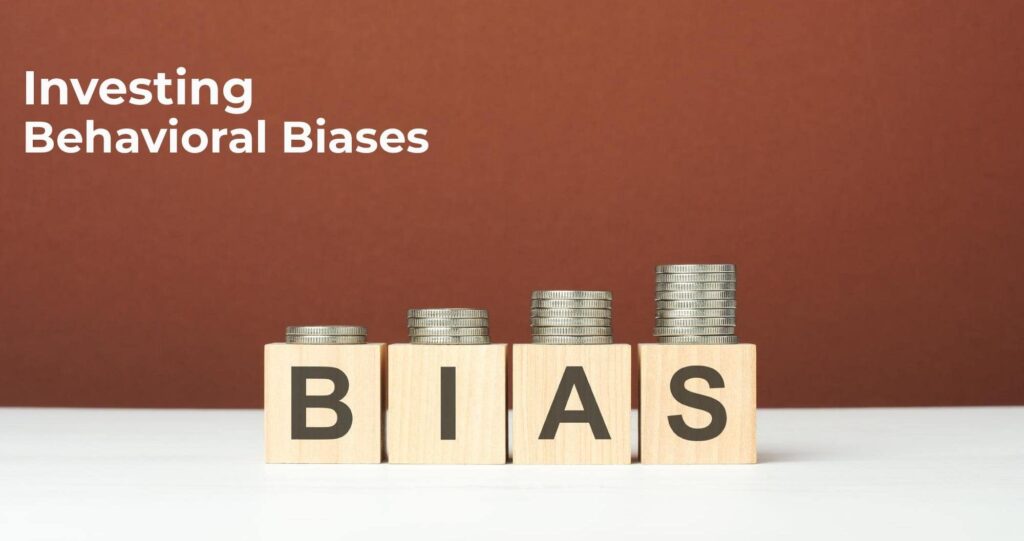Pirates or Thugs represents the various prejudice investors have which impacts their financial verdicts and averts them from generating wealth. Let us discuss some of the biases in detail so that any investor or future investor can be aware of such pointers and gain much.
The topmost is Loss Aversion bias which is the tendency to have more sensitivity towards losses than gains. e.g. in a highly volatile market, major investors tend to disinvest as soon the market reaps negative returns; most of the investors invest only in safe products like gold, FD, PPF, etc. due to the fear of loss.
Secondly, Attention Bias is the tendency to invest in financial products which are frequently highlighted in newspapers, news channels, or websites without analyzing the suitability to one’s risk profile and financial goals. e.g. investing in the most popular or famous mutual funds based on some newspaper or news channel without taking any advice from an advisor.
Thirdly, Regency Bias is the tendency to chase returns and invest in products that have performed well in the recent past without considering other factors. e.g. the majority of the people invest in direct mutual funds based on their last 3 or 6 or 12 months of performance.
Fourthly, Confirmation Bias is the tendency of investors to look for evidence that supports their beliefs or preconceived notions about investments and ignore contradictory data. e.g. investors who have a liking for any particular sector say realty or banking often search on the internet for articles recommending investing in realty or banking.
The next is Herd Bias is the mentality to follow the speculative choices of the masses blindly irrespective of whether it is rational or not. e.g. parking funds because of the reason that others are investing and not matching the suitability of risk appetite and preset financial goals.
Next comes the Optimism Bias which is the tendency to be positive about one’s own finances without having any defined investment plan. e.g. the confident investors who think they can build adequate retirement corpus even if they start investing near to their retirement.
Seventh no. showcases, Familiarity Bias which is the tendency of investors to invest in a familiar asset class. e.g. an investor who has seen his family investing in real estate will be comfortable in investing in the Real estate only because of his familiarity with the same.
Last but not the least is Anchoring Bias which is the tendency to anchor or to take investment decisions based only on certain events or situations. For e.g. many investors seek events such as the market correction or the election outcome to invest which in reality may not have an effect on the overall economy.







cialis 10mg tablet tadalafil 5mg cost otc ed pills
purchase accutane pills azithromycin uk order zithromax
buy azipro without a prescription azipro 500mg over the counter gabapentin 600mg brand
furosemide uk buy lasix 100mg ventolin inhalator buy online
purchase vardenafil pills order tizanidine pill plaquenil 400mg sale
altace online buy glimepiride online order arcoxia 120mg cheap
vardenafil canada vardenafil order hydroxychloroquine order online
buy cheap generic mesalamine where to buy asacol without a prescription oral avapro 150mg
buy olmesartan generic depakote 500mg pills buy depakote medication
buy clobetasol online where to buy amiodarone without a prescription buy cordarone sale
coreg order buy cenforce 50mg without prescription order chloroquine pill
acetazolamide price isosorbide for sale how to buy azathioprine
buy cheap generic olumiant buy lipitor cheap order generic lipitor 40mg
cheap proventil albuterol 100mcg cost how to buy phenazopyridine
singulair 10mg drug order dapsone 100 mg generic buy dapsone 100 mg for sale
norvasc 5mg usa buy generic norvasc 10mg buy prilosec 20mg sale
order metoprolol 100mg for sale buy generic tenormin buy generic methylprednisolone for sale
dapoxetine 30mg price misoprostol without prescription xenical 120mg brand
aristocort 4mg cost order loratadine pill loratadine price
buy generic diltiazem diltiazem without prescription zyloprim 300mg brand
ampicillin 500mg uk flagyl ca buy flagyl online
crestor 10mg drug buy generic motilium order motilium
buy tetracycline without prescription cyclobenzaprine order online buy lioresal generic
bactrim online buy septra online cheap buy clindamycin
toradol tablet inderal 20mg brand inderal 20mg without prescription
buy erythromycin online cheap cheap erythromycin 250mg tamoxifen 20mg ca
order clopidogrel 75mg sale where can i buy plavix warfarin price
buy generic reglan online cozaar 25mg tablet buy nexium pills for sale
brand methocarbamol 500mg where to buy trazodone without a prescription buy suhagra online cheap